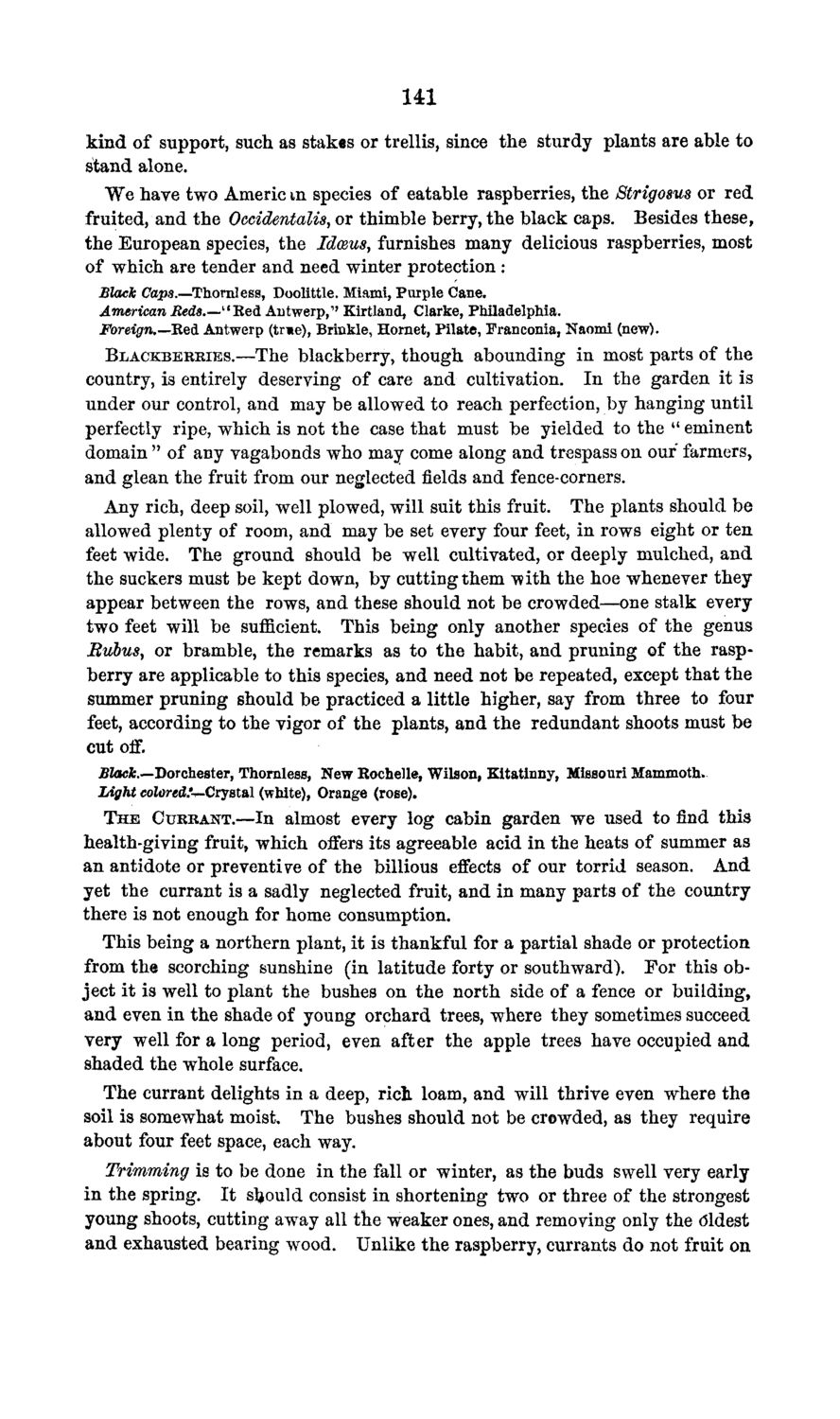| |
| |
Caption: Board of Trustees Minutes - 1869
This is a reduced-resolution page image for fast online browsing.

EXTRACTED TEXT FROM PAGE:
141 kind of support, such as stakes or trellis, since the sturdy plants are able to stand alone. "We have two Americ in species of eatable raspberries, the Strigosus or red fruited, and the Occidentalism or thimble berry, the black caps. Besides these, the European species, the Idaus, furnishes many delicious raspberries, most of which are tender and need winter protection : Black Caps.—Thornless, Doolittle. Miami, Purple Cane. American Reds.—"Red. Antwerp," Kirtland, Clarke, Philadelphia. Foreign.— Red Antwerp (true), Brinkle, Hornet, Pilate, Franconia, Naomi (new). BLACKBERRIES.—The blackberry, though abounding in most parts of the country, is entirely deserving of care and cultivation. In the garden it is under our control, and may be allowed to reach perfection, by hanging until perfectly ripe, which is not the case that must be yielded to the " eminent domain " of any vagabonds who may come along and trespass on our farmers, and glean the fruit from our neglected fields and fence-corners. Any rich, deep soil, well plowed, will suit this fruit. The plants should be allowed plenty of room, and may be set every four feet, in rows eight or ten feet wide. The ground should be well cultivated, or deeply mulched, and the suckers must be kept down, by cutting them with the hoe whenever they appear between the rows, and these should not be crowded—one stalk every two feet will be sufficient. This being only another species of the genus BubuSy or bramble, the remarks as to the habit, and pruning of the raspberry are applicable to this species, and need not be repeated, except that the summer pruning should be practiced a little higher, say from three to four feet, according to the vigor of the plants, and the redundant shoots must be cut off. Black.—Dorchester, Thornless, New Rochelle, Wilson, Kitatinny, Missouri Mammoth* Light coloredU-Crjat&l (white), Orange (rose). THE CURRANT.—In almost every log cabin garden we used to find this health-giving fruit, which offers its agreeable acid in the heats of summer as an antidote or preventive of the billious effects of our torrid season. And yet the currant is a sadly neglected fruit, and in many parts of the country there is not enough for home consumption. This being a northern plant, it is thankful for a partial shade or protection from the scorching sunshine (in latitude forty or southward). For this object it is well to plant the bushes on the north side of a fence or building, and even in the shade of young orchard trees, where they sometimes succeed very well for a long period, even after the apple trees have occupied and shaded the whole surface. The currant delights in a deep, rich, loam, and will thrive even where the soil is somewhat moist. The bushes should not be crowded, as they require about four feet space, each way. Trimming is to be done in the fall or winter, as the buds swell very early in the spring. It should consist in shortening two or three of the strongest young shoots, cutting away all the weaker ones, and removing only the oldest and exhausted bearing wood. Unlike the raspberry, currants do not fruit on
| |